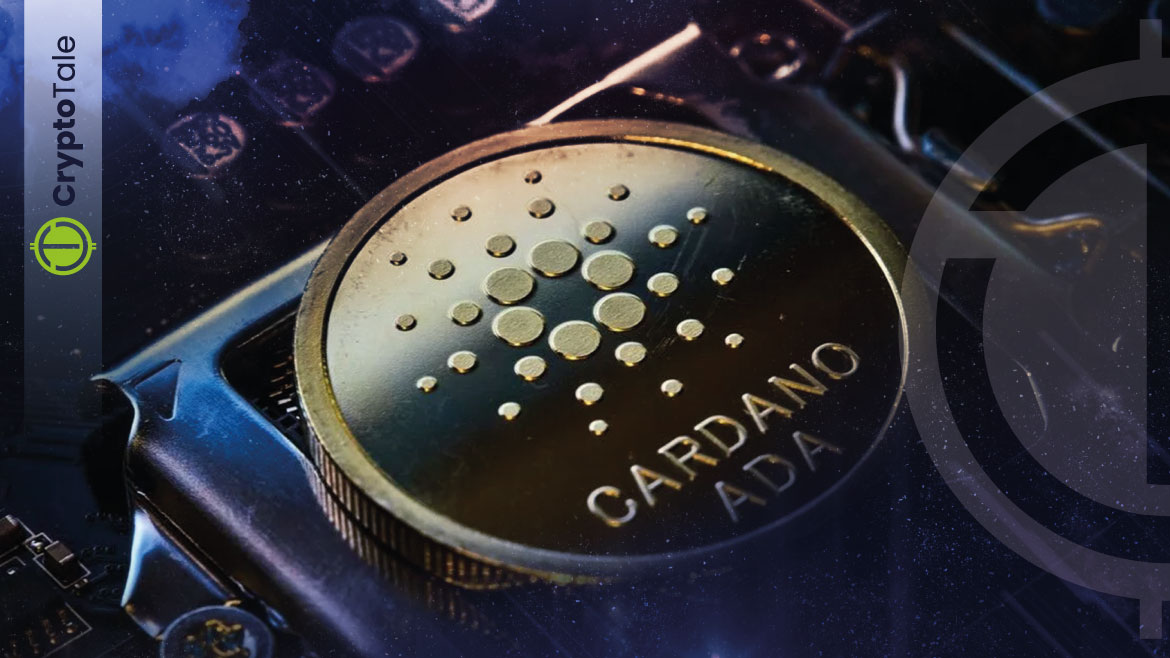
Cardano’s blockchain is a constantly updated chain of blocks that contain data like transaction records which is kept decentralized and secure by validators who are themselves incentivized with rewards in ADA, the native token of Cardano.
This means that it is completely decentralized and anyone is able to join to help keep the network secure and earn rewards by delegating and staking their ADA.
It is only natural for the Cardano blockchain to grow over time, which is why there are hard fork events to help upgrade the network by implementing new improvements to the existing blockchain.
For Cardano specifically, there have been several hard fork events in the past, such as the Mary hard fork which in turn brought native assets and allowed developers to create custom tokens on Cardano.
The next major hard fork event for Cardano will be the Vasil Hard Fork. This hard fork was named after the Bulgarian mathematician, Vasil Dabov, who was a prominent Cardano ambassador.
This hard fork aims to bring numerous upgrades to the network capacity and Cardano’s smart contract programming language, Plutus. Mostly, the Vasil hard fork will reconsider data processes in Cardano to make it a bit more resource optimized and developer-friendly.
What is Cardano?
Cardano was launched in September of 2017 by the Ethereum co-founder Charles Hoskinson, and it aims to be a third-generation blockchain project built on top of the technology that was pioneered by Bitcoin and Ethereum.
Today, Cardano is one of the biggest cryptocurrencies in terms of market capitalization and is designed to be the next-generation evolution of the Ethereum concept.
Cardano plans to make this a reality with a blockchain that is flexible, sustainable and by being a scalable platform that will enable the development of a wide range of decentralized finance apps, new crypto tokens, games and much more.
Just like Ethereum has its native token, ETH, Cardano’s native cryptocurrency is ADA, which can be bought and sold on various exchanges. ADA can be used to store value, to send and receive payments, and for staking and paying transaction fees on the Cardano network.
What is a Consensus Mechanism?
A consensus mechanism is a fault-tolerant mechanism used in computer and blockchain systems to achieve the required agreement on a single data value or a single state of the network among distributed processes or multi-agent systems, such as with cryptocurrencies.
What Is Proof of Work?
Proof of Work is the first consensus protocol used in a blockchain. It was the first protocol to enable an autonomous, distributed network. The premise of Proof of Work is that nodes in the network compete with each other to see who can calculate the hash of the next block on the network first.
To calculate this hash, each node in the network takes a bunch of information including a batch of unprocessed transactions, the hash of the previous block, a random value called a nonce, and other network information, and then pushes this information through a hashing function. This hashing function then generates an output.
Now, the network sets a value called the difficulty. The reason for this is to set the difficulty of calculating the hash for the next block. By having a difficulty value, the network is able to increase or decrease the difficulty depending on the collective computing power of the nodes in the network. This is done to keep the average block formation time relatively consistent.
Once the nodes get the output from the hashing function that they pushed the information through, the network compares each node’s output to the set difficulty. If one node’s output is lower than the difficulty set by the network and lower than any other node’s output, then that node wins the competition for that round.
The whole process then starts over again for the next block. This is repeated infinitely as each new block gets appended to the network. Each node tries different values for the nonce until they get an output that is lower than the network’s difficulty.
What is Proof of Stake (PoS)?
Proof of Stake is a blockchain consensus mechanism that reduces the amount of computational work needed to verify blocks and transactions on the network. With Proof of Stake, blocks are verified using the machines of coin owners.
The owners offer their coins up as collateral, and in return they get the opportunity to validate blocks and receive rewards for doing so. These coin owners with staked coins are known as validators.
Validators are selected at random to “mine” or validate blocks. What separates Proof of Stake from Proof of Work is that the validator selection process is randomized and not based on a competition-based mechanism as is the case in Proof of Work networks.
In order for someone to become a validator in a Proof of Stake network, a coin owner needs to stake a specific amount of cryptocurrency towards the network. Each network has a different requirement when it comes to how many coins a coin holder needs to stake before they can become a validator on the network.
For example, Ethereum requires 32 ETH to be staked before a person can become a validator.
Blocks are validated by more than one validator, and when a specific number of the validators verify that the block is accurate, it is finalized and closed.
Largest Proof of Stake Network
Unlike other well-known legacy cryptos like Bitcoin, Ethereum and Litecoin, Cardano utilizes what is known as a Proof of Stake consensus, which is much more eco-friendly, democratic and inclusive. This means that rather than using a network of miners racing to resolve a puzzle, Cardano uses a network of invested participants called validators.
Instead of contributing processing power to secure the network and verify transactions as miners do, validators in the Cardano Network stake their own ADA.
Exciting dApps Ecosystem
Just like Ethereum, Polygon and BNB Chain, Cardano is perfect for running decentralized applications (dApps) on. Cardano’s ecosystem has its own programming language called Plutus, and a low-code instrument for DeFi development known as Marlowe.
By the middle of June 2022, Cardano was used as a technical platform for more than 1,000 dApps, the majority of which fall in the non-fungible tokens (NFT) category.
All of these new developments mean that Cardano is catching up to Polygon in terms of the net number of active protocols.
What is a Hard Fork?
A hard fork is defined as a radical change of a network’s consensus that results in starting a blockchain that works in accordance with the new rules. In other words, it is an extreme change to a blockchain protocol, resulting in a permanent divergence between the previous blockchain and the new blockchain after the change.
All of the parallel chains working according to the pre-hard fork rules automatically degrade, meaning that their blocks are rejected by validators.
The old chain does not have to be abandoned completely as it can also start operating. The perfect examples of this are Bitcoin and Bitcoin Cash (BCH), as well as Ethereum and Ethereum Classic.
Cardano has undergone a number of hardforks in the past. For example, the Mary upgrade introduced support for multiple assets, while the Alonzo upgrade added a smart contracts functionality.
Cardano is also the only mainstream blockchain that boasts a “hardfork coordinator”. This is a unique mechanism designed to organize network upgrades seamlessly and with minimum function.
The Vasil Hard Fork
The Vasil hard fork was announced for the first time early in 2022 as a response to the growing popularity of Cardano’s smart contracts within dApps. The Vasil hard fork will make the onboarding of dApps more straightforward than before and it will also aim to make Cardano’s operations faster and cheaper.
There are also a number of Cardano Improvement Proposals (CIPs) that are ready to be implemented on the network. These upgrades will lower the number of transactions, making their execution more resource-optimized.
CIP-31: Reference Inputs
The CIP-31 upgrade aims to introduce “Reference Inputs”. This means that the mechanism will address the EUTXO ledger design shortcomings in order to improve the scalability and resource efficiency of Cardano transactions.
With CIP-31, it will no longer be necessary to “spend” the transaction output to see it. Prior to the Vasil hard fork, the output must be spent to know the information of the datum attached to that output. Users will now be able to see on-chain data without the full scope of operations associated with spending and recreating UTXOs.
This upgrade will also be able to advance the performance of on-chain data providers and save the network’s resources.
CIP-32: Inline Datums
With the implementation of CIP-32, a new type of data units referred to as inline datums will be attached to transactional outputs instead of datums/ hashes. This CIP will be able to streamline communication between actors in Cardano’s dApps ecosystem as well as make it a bit more comfortable for both senders and recipients of Cardano transactions.
In other words, CIP-32 will reduce the amount of data that participants of the consensus must check in order to interact with it.
Currently, since the datum’s hash is attached to the output, the full datum is required to finish the process. By implementing CIP-32, developers can code scripts that point to the inputs directly.
CIP-33: Reference Scripts
The CIP-33 update will be focused on Plutus scripts. At the moment, these scripts are usually short software programs that are not shared on-chain. This means that every time a script is used, the transaction that authorized its usage needs to supply the entire script as part of the transaction.
By doing this, the blockchain gets bloated and transactions that use more than one script can easily reach the size limit.
With the new CIP-33 update, activated scripts will be replaced by universal scripts. Transactions with universal scripts are much smaller , which means it will be much easier for the blockchain to process them.
The CIP-33 update will change many of the ways Plutus is used today. It will also require developers currently operating on Cardano to learn these new concepts.
CIP-40: Collateral Outputs
The CIP-40 update will push the barriers of DDoS-resistance of Cardano. Collateral outputs are usually set to improve the transaction validation process. Currently, if the transaction validation fails, its sender loses collateral.
With the implementation of CIP-40, DDoS protection will be carried out in a much more inclusive and fair manner. It will also remove the requirement for wallets to set collateral as it is an outdated method of DDoS-protection.
Vasil Timeline
The Vasil Hard Fork was proposed without any exact timeline, but was expected to be launched around June 29. Unfortunately, the launch was delayed.
The Vasil mainnet hard fork was then tentatively scheduled to take place in the last week of July after IOG announced a shift in the timeline toward the end of June. IGO explained that exchanges and SPOs (stake pool operators) needed at least four weeks for testing after the test net hard fork, which happened on July 3.
At the moment, it seems like the Vasil hard fork is experiencing delays once again. Kevin Hammond, OGO’s Technical Manager, explained that there could be a few more weeks of delay without stating a specific date for the release.
Over the last week, IOG reported that it was working on a new v.1.35.2. This version hopes to bring improvements and fix bugs that were discovered in the previous node versions during Vasil testing.
It was also reported that the Plutus V2 cost model was temporarily removed from the Cardano Testnet, while a potential issue raised by the community was properly investigated.
There is still no set release date for the Vasil hard fork, but it is expected to happen in “a few weeks”.
ADA’s Price Performance

ADA set an all-time high (ATH) of around $3.1010 towards the end of 2021, before retracing and then continuing its price fall for the weeks thereafter.
ADA’s price attempted a break above the 9 Exponential Moving Average (EMA) line on the weekly chart. However, these attempts were not successful as bears continued their dominance.
The first support that ADA’s price broke below was the support at $2.1, where it consolidated somewhat before breaking down to the next support level at $1.44 in the following 3 weeks. Once again, ADA’s price consolidated at this level for a handful of weeks before successfully challenging the support level.
Following the breakdown of the second major support, the price of ADA was able to break above the 9 EMA line, but was unable to hold at this level as the latest decline was ignited at this point, taking its price down to its current level.
The move above the weekly 9 EMA line came after news of the first confirmed date for the Vasil Hardfork upgrade. However, a delay in deploying the upgrade led to bears pushing ADA’s price down.
Bottom Line
The Vasil hard fork will be the most significant update for Cardano since the Alonzo hard fork and the activation of its smart contract functionality. The Vasil hard fork will consist of four CIPs that will address data transfer logic as well as some operations with Plutus scripts.
Vasil is also expected to advance the development experience and make dApps transactions faster and much cheaper.














